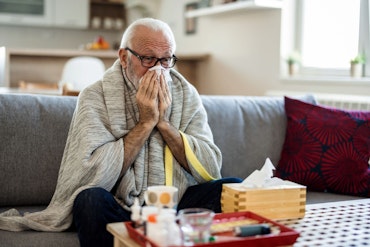Mandatory building code directing new norm in accessible housing
A new national building code will ensure all new houses will be more accessible for older Australians and people living with disability.
![<p>The building industry and property developers have been pushing back against housing accessibility provisions for years, so this is a big win for older Australians. [Source: iStock]</p>](https://agedcareguide-assets.imgix.net/news/articles/news/articles/Building-code-4_5_2021.jpg?fm=pjpg&format=auto&w=550&q=65)
The building industry and property developers have been pushing back against housing accessibility provisions for years, so this is a big win for older Australians. [Source: iStock]
On Friday, Federal, State and Territory Building Ministers agreed to the introduction of mandatory accessibility standards for new homes into the National Construction Code (NCC) 2022. The code has been labelled a big win for future older Australians who want to live at home for longer.
Peak bodies and advocacy groups for older Australians and people with disability have been lobbying for change to the NCC for nearly 20 years so that all new houses will be more accessible to people with mobility issues or a disability.
The NCC will now mandate the Livable Housing Design Guidelines Silver Level, which means all new houses will need to include a step free path from street to door, a step free entrance door, wider internal doorways to allow wheelchairs, hobless showers, reinforced walls around showers, toilets, and baths, safe to use stairs, and a toilet at the entry level.
The Building Better Homes Campaign members, consisting of over 60 advocacy groups and peak bodies, are ecstatic that the silver minimum is in place. There is the option for States and Territories to voluntarily implement gold accessibility standards if they so choose.
Convenor of the Australian Network for Universal Housing Design (ANUHD), Dr Margaret Ward PSM, says it is about time Governments listened to the call from older people and people with disability and their families for better housing so they can be included and can participate economically in their community.
“Over 80 percent of older Australians want to stay at home as they age and to die at home. But most older people don’t for a number of reasons, one of which is their housing is inappropriate,” explains Dr Ward.
“[The mandatory minimums] will not solve the problem but it will definitely assist older people to remain at home for as long as possible and to continue to participate in family life and community life, and also there is a greater chance for them to have their last days at home rather than in hospital.
“…I guess this is a very significant moment because now access to housing is the norm. While there will be waivers in specific situations, those waivers will have to be argued from the basis of wanting to exclude people and to be inaccessible rather than the other way around.”
All new homes, including houses, flats, and apartments, will be required to meet the silver minimum requirements once the new NCC comes into effect in late 2022.
The building industry and property developers have been pushing back against mandatory housing accessibility provisions for years, since the silver accessibility standards would have a 1 percent cost increase on top of the cost of building a home.
The gold accessibility standards would add about 3 percent to the cost of a new home or building.
Liveable Housing Australia created three level guidelines – silver, gold and platinum – as best practice standards to be used in housing design and construction to make safer, accessible homes.
The Gold Level includes all of the elements in the Silver Level, but also has special recommendations for design and use of kitchen and laundry spaces, allocation of space that can be used as a ground/entry level bedroom, as well as requirements for home design elements such as switches and power points, doors and tap hardware to be safe and accessible for all users.
Additionally, while the Livable Housing Australia (LHA) guidelines were developed in 2011 and the Government encouraged voluntary accessibility guidelines for the building sector to utilise, less than 5 percent of houses built over the period were made accessible.
Chief Advocate for National Seniors Australia, Ian Henschke, says he understands that there will be a one percent cost increase on newly built homes, however, the amount is nearly negligible and would open up the home to a larger cohort of people to live in.
In Australia, there are four million people over the age of 55 living in Australia who will likely require accessible housing in the future or currently, as well as over four million Australians living with a disability. Both of these cohorts struggle to find accessible housing in the country’s current housing market.
Mr Henschke adds that now Australia will be catching up to other countries, like those in Europe, that have had these standards in place for quite some time.
“For a country that has always prided itself on going for gold, we have taken a long time to shoot for silver,” says Mr Henschke.
“What I hope will happen is that this will focus attention on the fact that we do need to do much better [in regards to accessible housing] and we don’t need to listen continuously to the building industry and property developers who tell you that the sky will fall in if you build this sort of system that we are talking about.”
Mr Henschke says that the added benefit is that it will reduce the likelihood of falls for older Australians, thereby reducing hospital visits, which can usually result in older people moving into aged care, as falls are the most common reason for moving into a nursing home.
“I think most Australians will tell you they want to stay in their own home for as long as possible. These changes will mean they can do that for as long as possible,” says Mr Henschke.
“… The fact that just five percent of new homes built in the past ten years had minimum accessibility standards showed the voluntary code did not work.
“We have spoken on behalf of older Australians and those vast numbers of Australians living with a disability and finally the ministers have listened.
“This will ensure more Australians with limited mobility who want to stay in their homes can do so, without being forced into residential aged care.”
Mr Henschke adds that this change to the National Construction Code is not just a win for older Australians and people with disability, it is a win for the larger community, as a change in health or an unexpected accident could lead to a person requiring an accessible home.
“You have got to look at the big picture, and the big picture is, this is a fantastic move for the whole community,” says Mr Henschke.











![The new Aged Care Act exposure draft is slated for release in December of 2023, but advocates hope to see it rolled out on January 1, 2024. [Source: Shutterstock]](https://agedcareguide-assets.imgix.net/news/articles/wp/agedcareact__0811.jpg?fm=pjpg&w=520&format=auto&q=65)












Comments